TUTANKHAMUN
THE
UNTOLD STORY
by Thomas Hoving


First Cooper Square Press edition 2002
This Cooper Square Press paperback edition of Tutankhamun is an unabridged republication of the edition first published in New York in 1978, with the deletion of twenty color and nineteen black and white photographs. It is reprinted by arrangement with the author.
Copyright 1978 by Hoving Associates, Inc.
Designed by Eve Metz
All rights reserved.
No part of this book may be reproduced in any form or by any electronic or mechanical means, including information storage and retrieval systems, without written permission.
Published by Cooper Square Press
A Member of the Rowman & Littlefield Publishing Group
150 Fifth Avenue, Suite 817
New York, New York 10011
www.coopersquarepress.com
Distributed by National Book Network
Library of Congress has cataloged the hardcover edition as follows:
Hoving, Thomas Pearsall Field, date.
Tutankhamunthe untold story
Includes index.
1. Tutankhamun, King of EgyptTomb. 2. Excavation (archaeology)Egypt. 3. EgyptAntiquities. I. Title.
DT87.5.H68 932 78-17751
ISBN 0-8154-1186-3 (pbk : alk. paper)
 The paper used in this publication meets the minimum requirements of American National Standard for Information SciencesPermanence of Paper for Printed Library Materials, ANSI/NISO Z39.481992.
The paper used in this publication meets the minimum requirements of American National Standard for Information SciencesPermanence of Paper for Printed Library Materials, ANSI/NISO Z39.481992.
Manufactured in the United States of America.
Acknowledgments
To all those who have dealt with Tutankhamun, the most fascinating archaeological adventure in history, and helped in the preparation of this book on the subject, I owe profound thanks:
The members of the Egyptian Department of the Metropolitan Museum of Art for invaluable leads and discussions on the subjectin particular, Christine Lilyquist, Curator, and Thomas Logan, Associate Curator.
I.E.S. Edwards, former Curator of Egyptology at the British Museum, for his interest, his expertise, his recollections and splendid anecdotes.
Bernard Bothmer, Curator of the Egyptian Department of the Brooklyn Museum, and Charles Wilkinson, former Curator of Middle Eastern Art and Archaeology at the Brooklyn Museum.
John Cooney, Curator of Ancient Art at the Cleveland Museum of Art, for his help in informing me of the whereabouts of a number of objects in the United States originally from the tomb and for his invaluable assistance in rooting out errors in this book.
Robert Keedick, President of the Keedick Lecture Bureau, for supplying me with fascinating unpublished material about Howard Carter, compiled by his father, who had arranged Carters American lecture tour.
Lord Carnarvon of Highclere for his gracious permission to quote from certain unpublished letters and notes of his father, the patron of the excavation.
Ashton Hawkins, Secretary of the Metropolitan Museum of Art, for his permission to quote from Metropolitan Museum sources.
Sir Denis Hamilton, Publisher of the London Times, for his interest in the book and his forthright suggestion that I probe the Tutankhamun files in the archives of the Times.
Gordon Phillips, Archivist of the London Times, for his warm hospitality and keen humor and for his permission to quote from letters and documents in his well-tended archives.
Alice E. Mayhew, Editor at Simon and Schuster, for her dynamic help in so many things regarding the publication of this book.
Vera Schneider for her sensitive copy editing of the final manuscript.
Mary Doherty, of the Metropolitan Museum, for her unstinting aid in tracking down slides and photographs.
Cecilia Mescall, Executive Administrator of Hoving Associates, Inc., for her constant help in preparing the manuscript.
Nancy Hoving for research, critical judgment and constant support.
Robert Lescher, Literary Agent, without whose unremitting interest, professional skills in editing the many manuscripts and sage advice, this book would never have emerged.
THOMAS HOVING
To my wife, Nancy
Contents
Introduction
THE DISCOVERY in the late evening of November 26, 1922, of the tomb of King Tutankhamun in Egypts romantic Valley of the Kings, and the removal from it, over ten years, of nearly five thousand dazzling works of art caused a sensation throughout the world. It was, and remains, the richest discovery in the history of archaeology.
Tutankhamun, a shadowy pharaoh who lived over three thousand years ago and died under mysterious circumstances at the age of eighteen or nineteen around 1350 B.C., instantly became a prime celebrity of the 1920s. The discoverers of the tombHoward Carter, who was a British Egyptologist, and his wealthy patron, George Edward Stanhope Molyneux Herbert, Lord Carnarvonbecame unwilling celebrities at the same time.
After the shattering years of the Great War, the unearthing of the only pharaohs tomb in the valley that had not been totally pillaged by ancient tomb robbers was extraordinarily appealing. The two excavators had been told by all the experts that the ancient City of the Dead had been completely excavated, yet they pressed on doggedly. For years they found nothing. But over the years they persistently assembled clues that led them to the inescapable conclusion that the valley held one more royal tomb, which other archaeologists had ignored. Then, in the very last season that the patron would support, in the last minute area of the valley where they guessed no earlier excavator had plumbed to the bedrock, there came the splendid discovery. Suddenly before them lay thousands of works of art of such serene beauty that certain visitors to the tomb literally felt faint when they looked upon them.
Word of this phenomenal discovery spread throughout the world, speeded along by techniques that had barely existed before, the miracle of modern communications, including telegraph and telephones at the tomb itself, and the first minute-by-minute photographs and moving film footage ever undertaken in the history of archaeology. The following year, a mummys curse which was said to have killed Lord Carnarvon ignited a conflagration of public excitement.
Since the startling day of the discovery just over a half century ago, the treasures of King Tutankhamun have continued to capture the public imagination. No exhibition of works of art has been more popular in world history than The Treasures of Tutankhamun, which has traveled outside Egyptto Paris in 1967, to the British Museum in 1972, to four cities in the Soviet Union in 1973, and to seven cities in the United States. Because of this exhibition, a madness for King Tut seems to have taken hold. When the fifty-five masterpieces were at the National Gallery of Art in Washington, D.C., nearly a million visitors viewed them in sixteen weeks. At the Field Museum in Chicago the million mark had been reached in just ten weeks. No doubt over seven million individuals will have paid homage to the youthful Pharaoh by the end of the three-year tour that was sent to the United States in honor of the Bicentennial by the government of Egypt.
In the fifty-six years that have passed since the discovery, dozens of books and exhibition catalogues have been published, and hundreds, even thousands, of news stories have appeared. One would think there would be little new to relate about Tutankhamun and the events surrounding the dramatic find. Not so. As a matter of fact, in all the accounts published up to nowincluding the three-volume history written by Howard Carter and a colleague, A. C. Mace of the Metropolitan Museum of Art in New Yorksome of the most important facts regarding the discovery and its aftermath were not revealed, deliberately on the part of some, unconsciously by others. These facts, overlooked or suppressed, substantially change the official and up to now unquestioned story and impart to it a human interest far beyond simply the obvious nature of its archaeological significance.


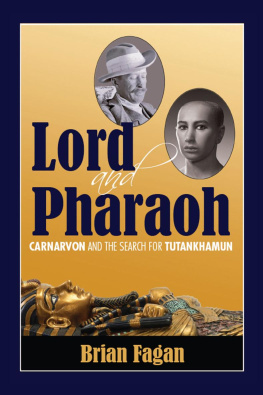
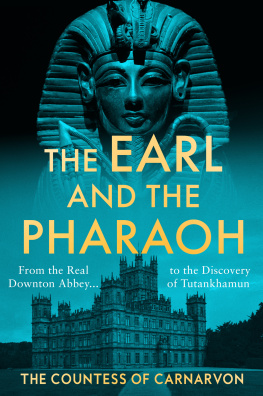
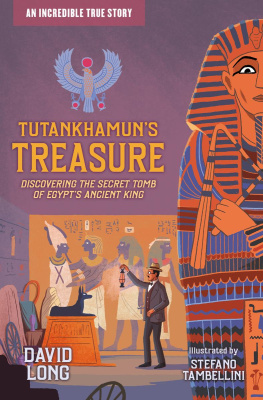
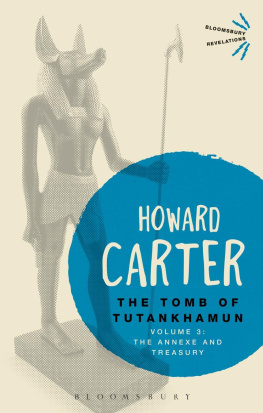

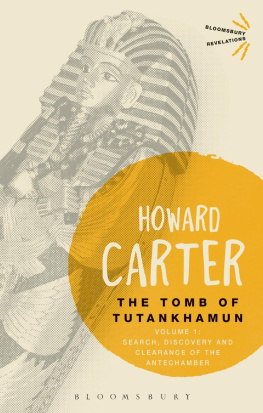
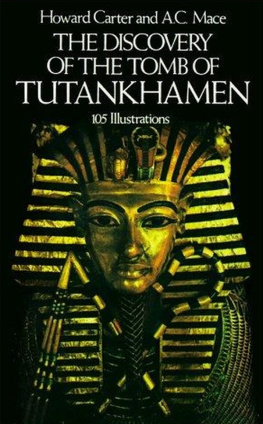
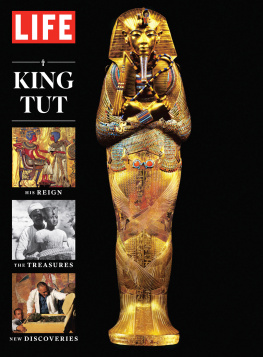


 The paper used in this publication meets the minimum requirements of American National Standard for Information SciencesPermanence of Paper for Printed Library Materials, ANSI/NISO Z39.481992.
The paper used in this publication meets the minimum requirements of American National Standard for Information SciencesPermanence of Paper for Printed Library Materials, ANSI/NISO Z39.481992.